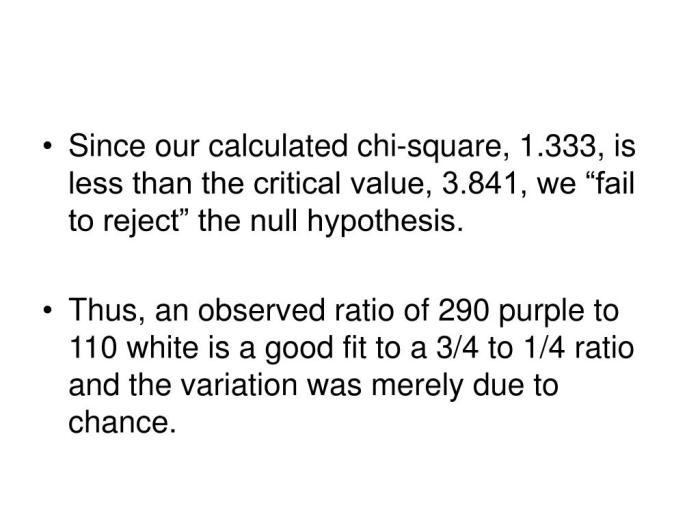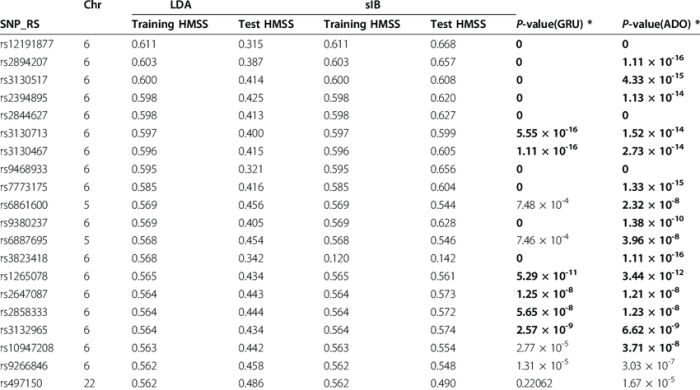Welcome to the psy 260 chi square quiz, your gateway to understanding the intricacies of statistical analysis. In this comprehensive guide, we’ll delve into the world of chi-square tests, exploring their purpose, applications, and interpretation in the field of psychology.
From defining the chi-square test to examining its role in hypothesis testing, we’ll cover the essential concepts you need to master this statistical tool. So, buckle up and prepare to embark on an enlightening journey into the realm of chi-square analysis.
Introduction

Chi-square test, a statistical method, evaluates the association between two or more categorical variables. It assesses whether the observed frequency distribution of the variables significantly differs from the expected distribution.
To tackle the intricacies of the psy 260 chi square quiz, it’s worth delving into the wisdom shared by John Epps, a prominent figure in the Omega Psi Phi fraternity ( john epps omega psi phi ). His insights can help unravel the complexities of statistical analysis, empowering you to navigate the psy 260 chi square quiz with confidence.
In statistical analysis, chi-square test serves as a non-parametric tool, making no assumptions about the underlying distribution of the data. It is particularly useful when dealing with categorical data or when the sample size is small.
Applications in Psychology, Psy 260 chi square quiz
Chi-square test finds wide application in psychology, particularly in analyzing data from surveys, questionnaires, and observational studies. It helps researchers determine:
- Whether there is a significant relationship between two categorical variables, such as gender and political affiliation.
- The degree of association between multiple categorical variables, such as socioeconomic status, education level, and voting behavior.
- The goodness of fit of a theoretical distribution to an observed distribution, such as testing whether the distribution of personality traits in a population follows a normal distribution.
Chi-Square Distribution
The chi-square distribution is a continuous probability distribution that arises in statistical hypothesis testing. It is used to test the goodness of fit of a model to data, and to compare the observed frequencies of events to the expected frequencies.The
chi-square distribution is a special case of the gamma distribution. It is defined by a single parameter, the degrees of freedom. The degrees of freedom determine the shape and properties of the distribution.The chi-square distribution is a positively skewed distribution.
The mean of the distribution is equal to the degrees of freedom, and the variance is equal to twice the degrees of freedom.The chi-square distribution is used in a variety of statistical tests. Some of the most common tests include:* The goodness-of-fit test
- The chi-square test of independence
- The chi-square test of homogeneity
Degrees of Freedom
The degrees of freedom are a measure of the number of independent observations in a data set. The degrees of freedom are equal to the number of observations minus the number of parameters that are estimated from the data.The degrees of freedom have a significant impact on the shape of the chi-square distribution.
The distribution becomes more skewed as the degrees of freedom decrease.
Examples of Chi-Square Distributions
The following are examples of chi-square distributions with varying degrees of freedom:* A chi-square distribution with 1 degree of freedom is a half-normal distribution.
- A chi-square distribution with 2 degrees of freedom is a gamma distribution with shape parameter 1.
- A chi-square distribution with 3 degrees of freedom is a gamma distribution with shape parameter 3/2.
Hypothesis Testing with Chi-Square

Hypothesis testing using chi-square is a statistical technique used to determine whether there is a significant difference between observed and expected frequencies in a set of data.
The chi-square test is based on the chi-square distribution, which is a probability distribution that describes the distribution of the sum of squared differences between observed and expected frequencies.
Null and Alternative Hypotheses
Before conducting a chi-square test, two hypotheses must be formulated:
- Null hypothesis (H0): There is no significant difference between the observed and expected frequencies.
- Alternative hypothesis (H1): There is a significant difference between the observed and expected frequencies.
Calculating the Chi-Square Statistic
The chi-square statistic is calculated as follows:
χ2= Σ [(O
E)2/ E]
where:
- χ 2is the chi-square statistic
- O is the observed frequency
- E is the expected frequency
Determining Significance
The chi-square statistic is used to determine the significance of the difference between the observed and expected frequencies. The significance is determined by comparing the chi-square statistic to a critical value from the chi-square distribution with k – 1 degrees of freedom, where k is the number of categories in the data.
If the chi-square statistic is greater than the critical value, then the null hypothesis is rejected and the alternative hypothesis is accepted.
Assumptions of Chi-Square Test
The chi-square test, like any statistical test, relies on certain assumptions to ensure its validity and accuracy. Understanding these assumptions is crucial for interpreting the results correctly.
There are three primary assumptions of the chi-square test:
Independence of Observations
The observations or data points used in the chi-square test must be independent of each other. This means that the outcome of one observation should not influence the outcome of another. For instance, if you are conducting a chi-square test to compare the gender distribution of two groups, the gender of one individual in Group A should not affect the gender of any individual in Group B.
Expected Frequency
The expected frequency for each cell in the contingency table should be at least 5. This ensures that the chi-square distribution is a good approximation of the sampling distribution of the test statistic.
Random Sample
The data used in the chi-square test should be randomly sampled from the population of interest. This means that each observation has an equal chance of being selected, and the sample is representative of the population.
Consequences of Violating Assumptions
Violating the assumptions of the chi-square test can lead to incorrect or misleading results. For example, if the observations are not independent, the chi-square test may overestimate the significance of the results. Similarly, if the expected frequency is too low, the chi-square test may not be sensitive enough to detect a significant difference.
Situations Where Chi-Square Test is Not Appropriate
The chi-square test is not appropriate in certain situations, such as when:
- The data is not categorical.
- The sample size is too small (less than 30).
- The expected frequency is too low (less than 5).
- The data is not randomly sampled.
Interpreting Chi-Square Results
Interpreting the results of a chi-square test involves understanding the p-value and its significance. The p-value represents the probability of obtaining a chi-square statistic as large as or larger than the one calculated, assuming the null hypothesis is true.
P-Value and Significance
A small p-value (typically less than 0.05) indicates that the observed data is unlikely to have occurred by chance alone, and thus provides evidence against the null hypothesis. In other words, a small p-value suggests that there is a statistically significant relationship between the variables being tested.
Examples in Psychological Research
- Relationship between Gender and Political Affiliation:A chi-square test found a significant relationship (p< 0.05) between gender and political affiliation, indicating that men and women have different preferences for political parties.
- Effectiveness of a Therapy Intervention:A chi-square test compared the success rates of two therapy interventions. The results showed a significant difference (p< 0.01) in success rates, suggesting that one intervention was more effective than the other.
Applications in Psychology

The chi-square test is a versatile statistical tool that finds numerous applications in the field of psychology. It enables researchers to examine the relationship between categorical variables, providing insights into various psychological phenomena.
Example Studies
- Personality and Career Choice:A chi-square test was used to investigate the association between personality traits and career choices. The results revealed a significant relationship, indicating that individuals with certain personality profiles are more likely to pursue specific careers.
- Gender and Cognitive Abilities:Researchers used chi-square to analyze differences in cognitive abilities between males and females. The test found significant differences in spatial reasoning and verbal fluency, contributing to our understanding of gender-related cognitive variations.
Contribution to Psychological Understanding
The chi-square test has significantly advanced psychological understanding by:
- Identifying Relationships:It allows researchers to uncover associations between different categorical variables, shedding light on the underlying relationships between psychological factors.
- Testing Hypotheses:The chi-square test enables researchers to test hypotheses about the distribution of categorical data, providing evidence for or against specific theories.
- Exploring Complex Phenomena:By examining the relationships between multiple categorical variables, chi-square helps researchers unravel complex psychological phenomena, such as the interplay of personality traits and social behavior.
Expert Answers: Psy 260 Chi Square Quiz
What is the purpose of a chi-square test?
A chi-square test is used to determine whether there is a significant difference between the observed frequencies of events and the expected frequencies under a given hypothesis.
What are the assumptions of a chi-square test?
The assumptions of a chi-square test include independence of observations, expected frequencies greater than 5, and no more than 20% of expected frequencies less than 5.
How do I interpret the results of a chi-square test?
The results of a chi-square test are interpreted using a p-value. A small p-value indicates that the observed frequencies are significantly different from the expected frequencies, suggesting that the hypothesis is not supported.